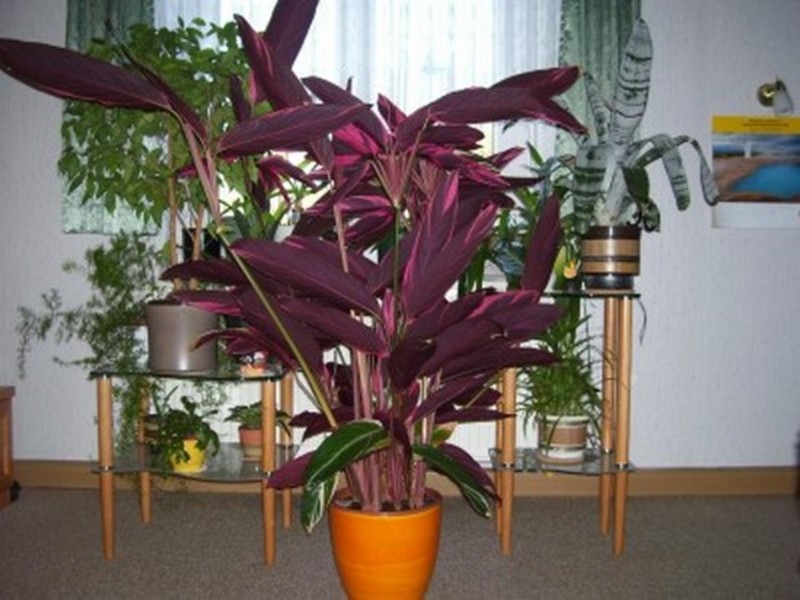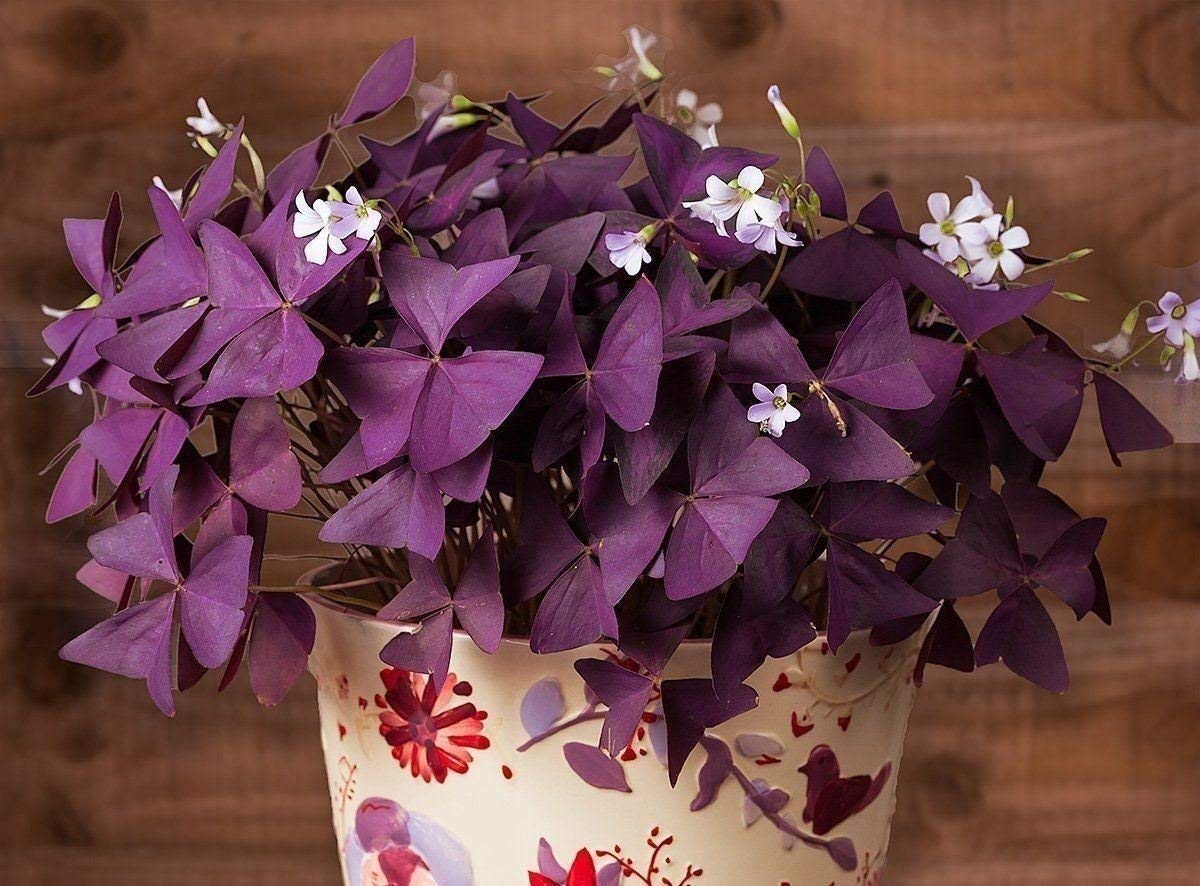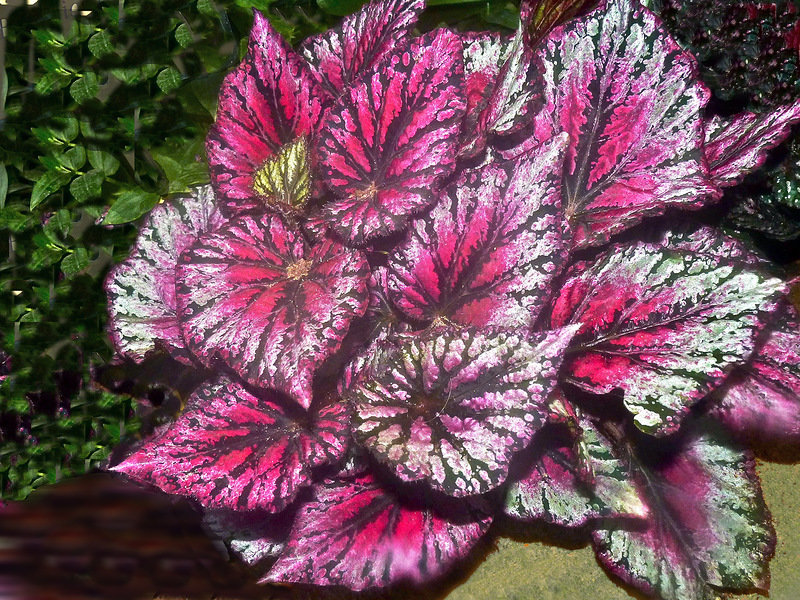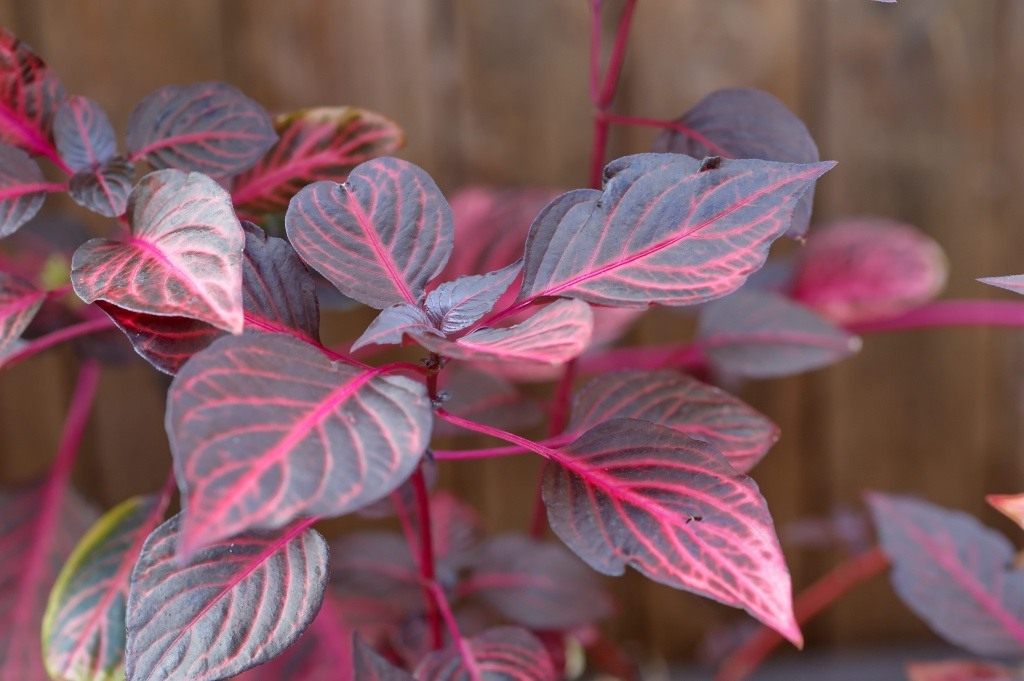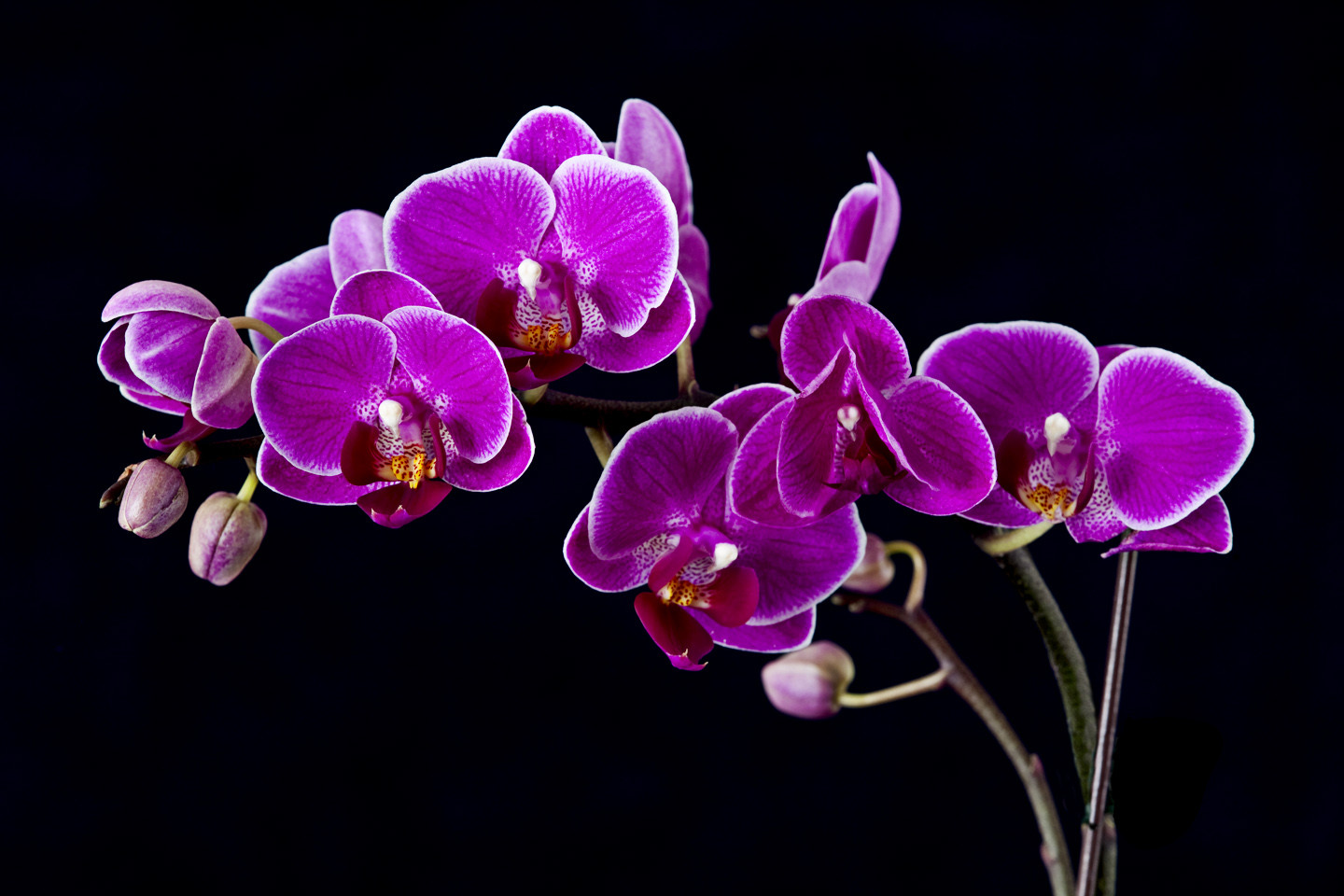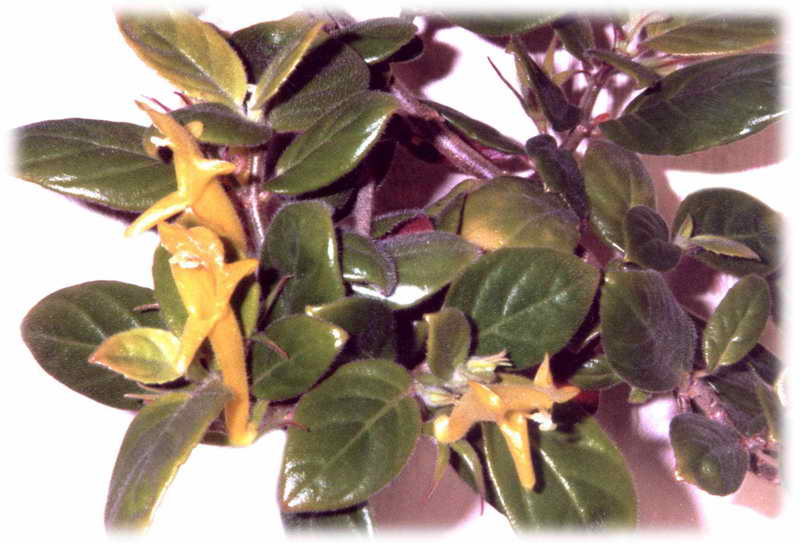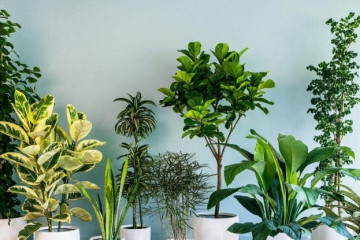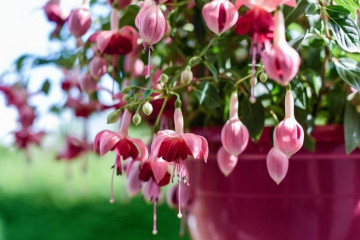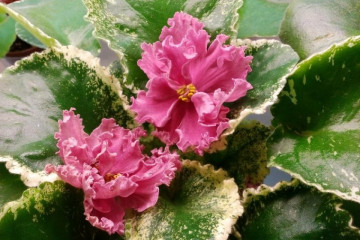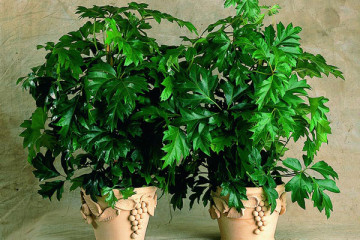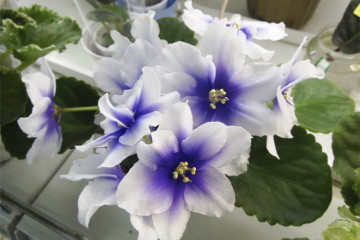Home indoor flower with purple leaves
Content:
Indoor flower with purple leaves is not something unique and unusual for a long time. Such plants, even without bright lush inflorescences, are able to decorate the house throughout the year, while taking a worthy place in the collection of any grower. Indoor plants with purple leaves are very diverse. In such a shade, not only the leaves, which are smooth or fleecy, can be painted, but also the stem.
Names and short descriptions of indoor flowers with purple leaves
The unusual color of the leaves can be of various shades: from light lilac to deep purple. It can be uniform, it can be located on both sides of the leaf at once, and there are options where such a color is presented on one side - only above or below, while the other part remains the usual green. The well-known oxalis (moth) with small triangular leaves, irezine (which needs a lot of light to maintain the brightness of the color) are purple on both sides. The types of Herbst irezine and Pearl Lady irezine are monochromatic.
The upper side of the leaves is colored purple
Among all the variety of indoor flowers, painted in this unusual, unusual shade only from above, the most popular is the alternating hemigraphis. In nature, there are more than 100 species of this plant. At home, ampel and semi-ampel forms are grown. It can be perennial or annual. The plant is whimsical, but it looks very impressive.
With proper care, the ovoid toothed leaves turn purple on top (its saturation changes depending on the lighting), remaining light green on the back.
The underside of the leaves is colored purple
There are other plants with leaves only purple underneath. The most common among them:
- rheo is the most popular plant, whose lower leaves are purple in color. It attracts flower growers with its unusual appearance and lack of finicky care. In addition, the rheo also blooms beautifully;
- ginura. There are several varieties, but the most popular and unpretentious is the braided ginura variety. This is an ampelous species with velvety leaves. Leaves resemble nettles in shape, but differ in unusual color in the lower part;
- purple. This is a close relative of Tradescantia, and therefore caring for it is quite problematic. It is a long liana. The leaves are olive-reddish above and slightly shaggy, and below - smooth, deep purple.
Houseplants with purple spots or stripes on the leaves
Indoor flowers with a heterogeneous color look very impressive: with spots or stripes, a marble shade. The most attractive ones:
- royal begonia. This is one of the leafy begonia hybrids, not grown to admire the lush blossoms, but to enjoy the unusual, mottled foliage all year round.The leaf part has an asymmetric shape and reaches a length of up to 15 cm. The drawing is always bright, representing a complex pattern of green, purple, silver and burgundy colors. Royal begonia is a very whimsical plant that needs extra attention;
- zebrina purple. One of five types of zebrins suitable for growing at home. Leaves are oval in shape with pointed edges and a pronounced striped color. The stripes are white with lilac-burgundy, which looks very unusual and attractive. It blooms with small lavender flowers;
- irezine Linden. This is a plant, the leaves of which are painted on top in a dark purple color, with reddish stripes and veins.
Houseplants with purple flowers
A purple home flower can delight not only with the color of the leaves, but also with beautiful inflorescences. There are a lot of plants that bloom like this. The most popular among them are:
- saintpaulia (uzambara violet). Violet is a name familiar to everyone, when this word is mentioned, it immediately appears as a small plant with pubescent leaves of a dark green color and medium-sized flowers. They come in many species and hybrid varieties. In many types of violets, flowers have a palette of colors from light lilac to deep purple, they can be simple and double;
- gloxinia is an equally popular plant. Perennial, tuberous with original bell-shaped flowers. Inside they are bright in color, edged with a white stripe along the edge, velvety to the touch;
- orchid. This plant is now at its peak of popularity. Large flowers of various shades are located on a tall, thin trunk. The flowering period is long, the inflorescences are very elegant and unusual, similar to the wings of a butterfly. Lilac orchids are considered the most unpretentious and most resistant to disease.
Indoor flowers with purple stems
Flowers grown on a windowsill often have purple stems. There are representatives of the home flora that have such original stems:
- purpurea netcreasia. It belongs to the Tradescantia family, therefore it requires a lot of attention. It is grown as an ampel and semi-ampel plant. It differs not only in completely purple leaves, but also in stems of the same color, as well as lilac small flowers. Shoots are long, grow up to 1 m;
- tradescantia purple. An interesting plant with fleshy purple stems and moisture-accumulating leaves reaching 20 cm in length. It blooms with small pink flowers. Growth form - semi-ampel or bush;
- Columnea Sulfurea is one of the varieties of Columnae (there are about 200 of them in total), which, like other representatives of this species, has only a hanging version of growth. Vines reach up to 1 m in length. All columnists need long daylight hours and bright lighting. These factors ensure their flowering and fruiting. Columnea Sulfurea flowers are tubular, yellow. After flowering, white fruits are formed on the plant. The stems of this flower are reddish purple, as is the lower part of the leaf.
Purple indoor flowers can decorate any room and bring a little variety to every interior. And it doesn't matter at all whether it will be painted in this color in whole or in part. The most important thing is showiness and originality. As a rule, these plants are not too picky, and all they need is as much sunlight as possible to make the color brighter.
